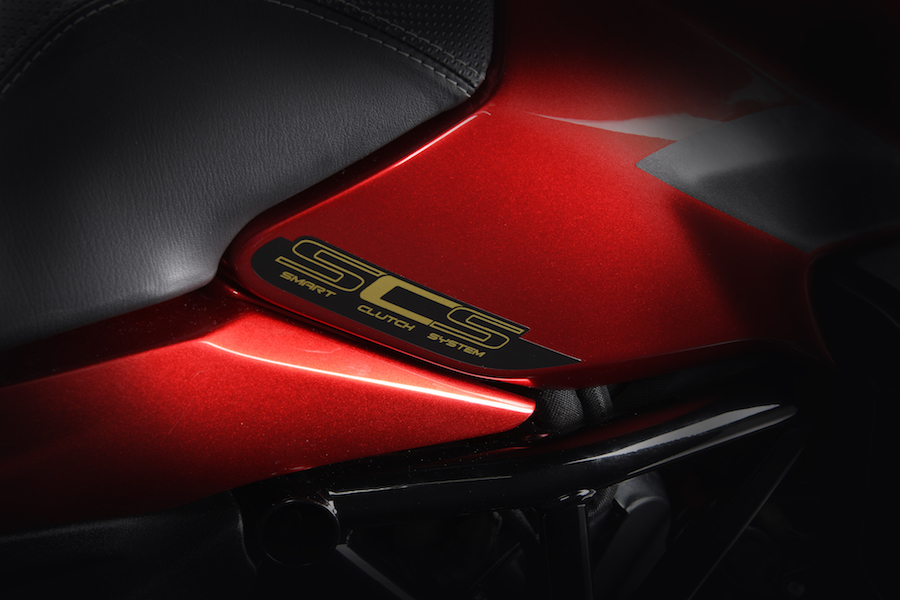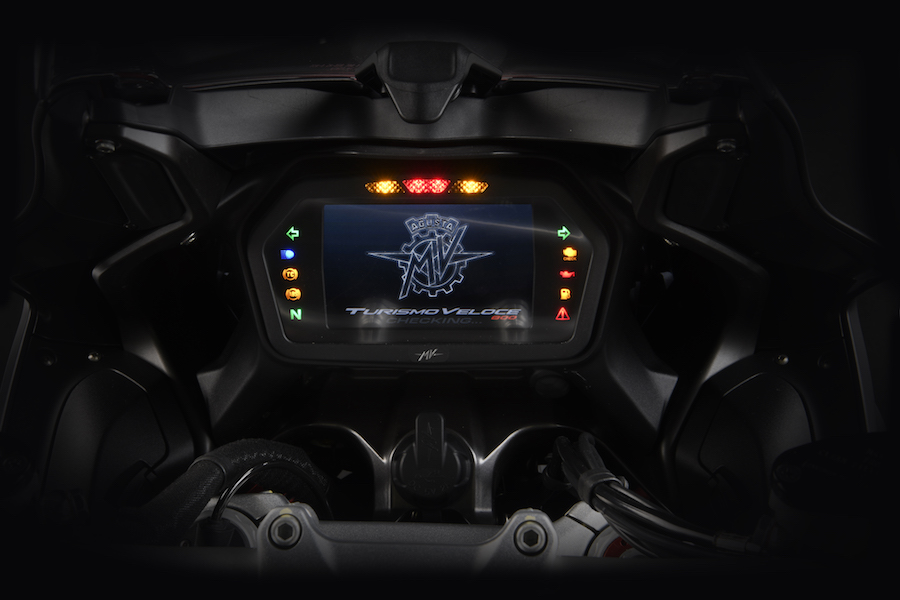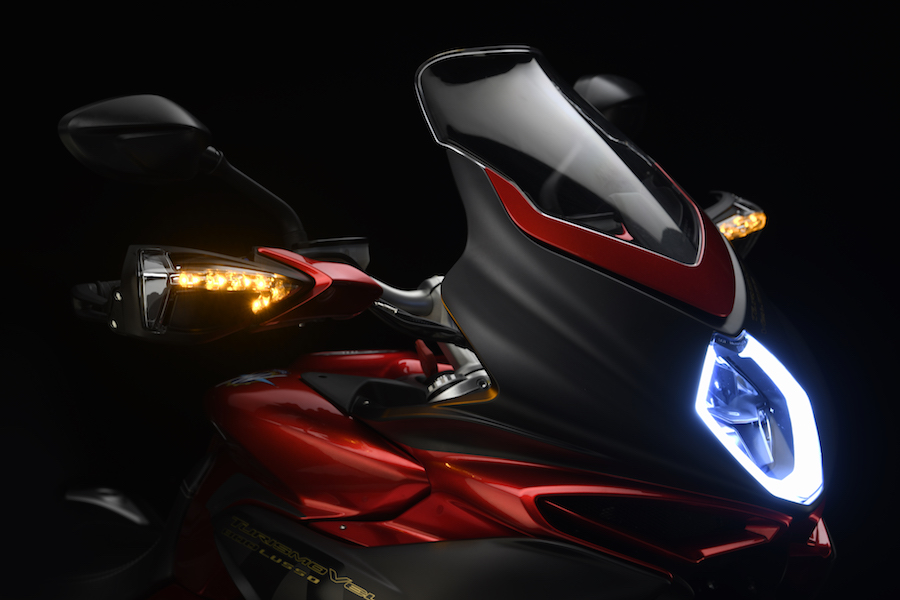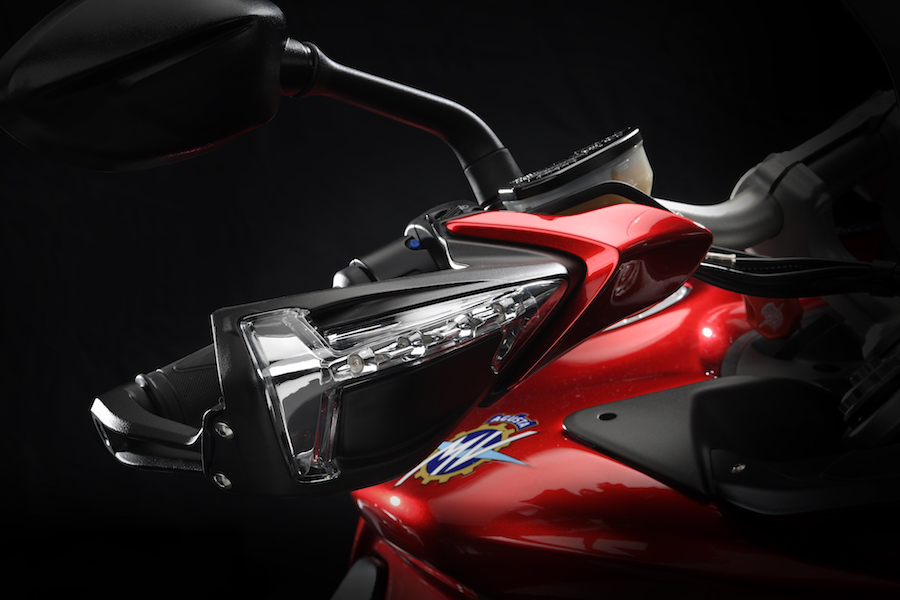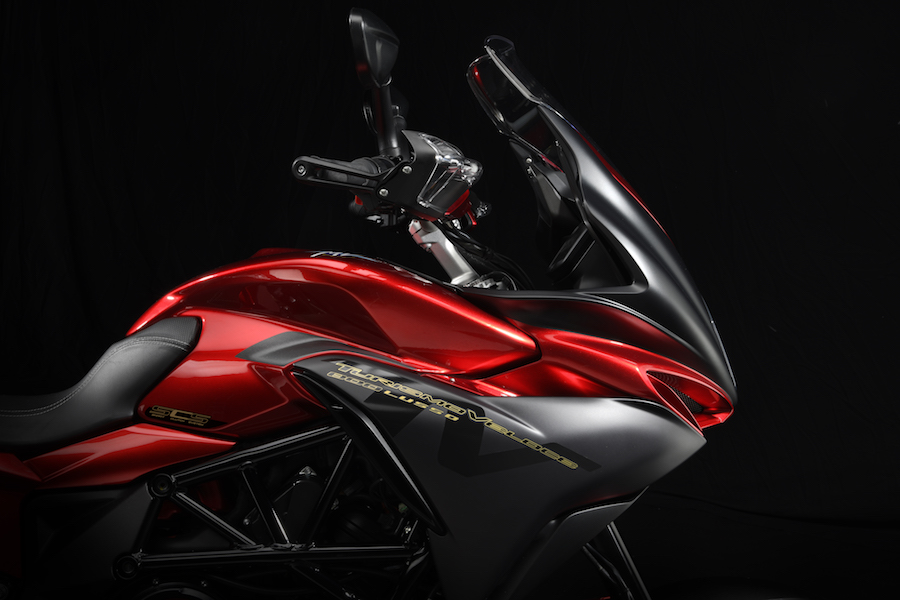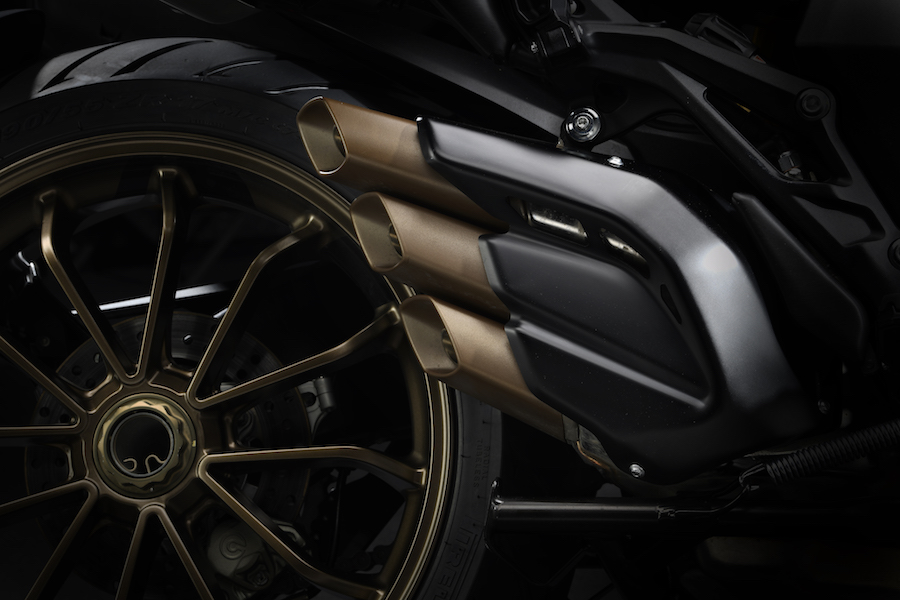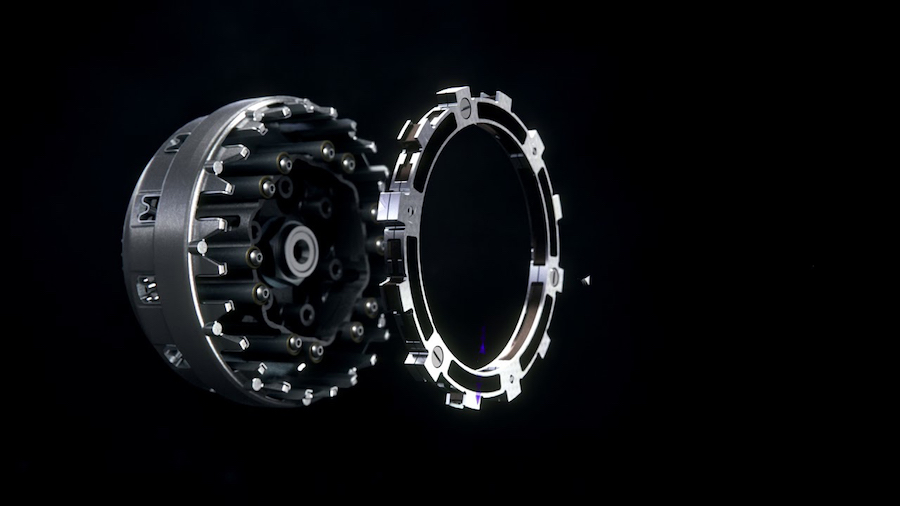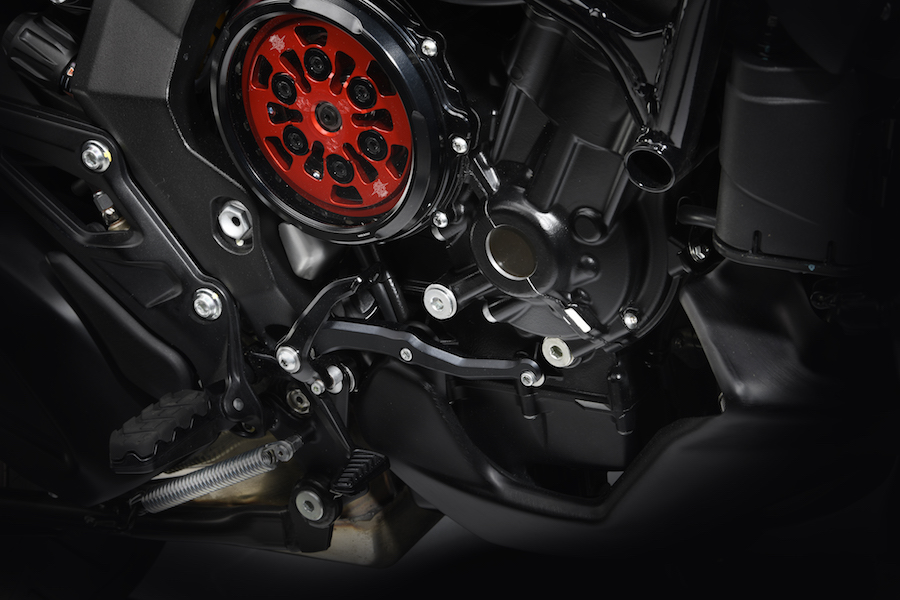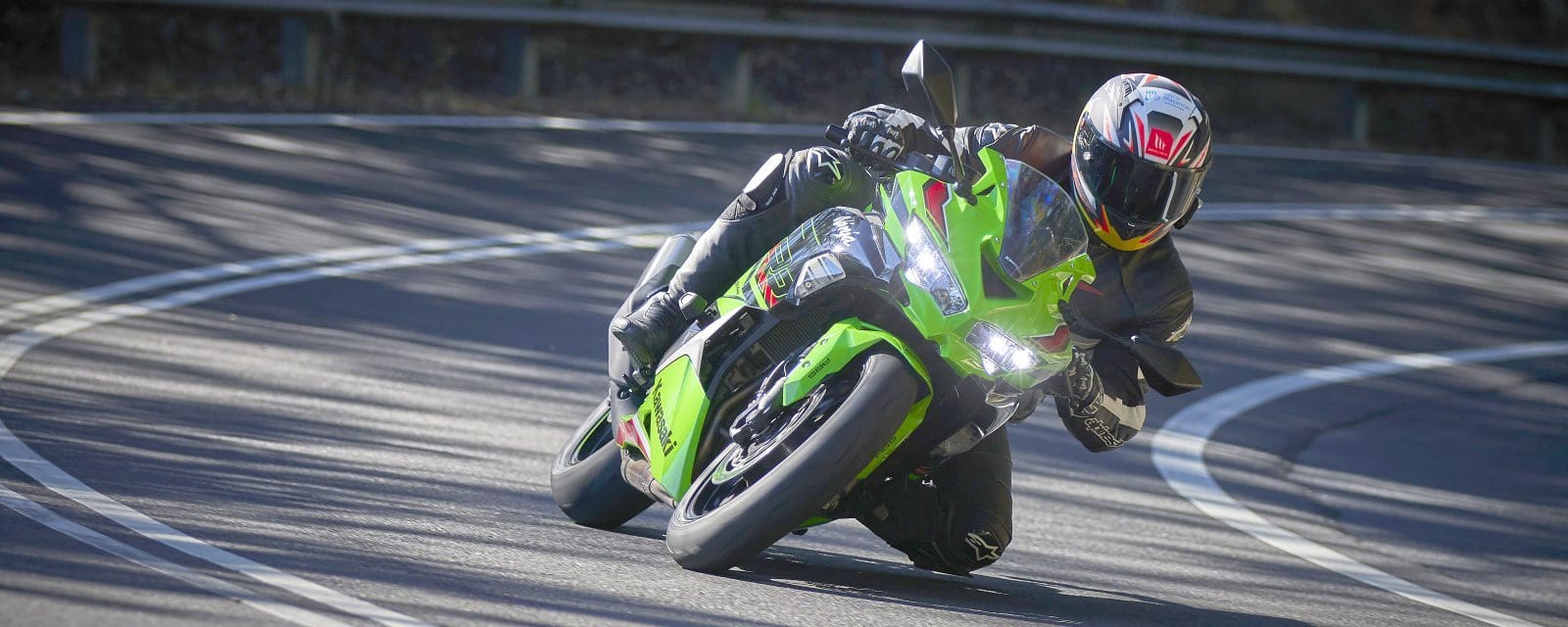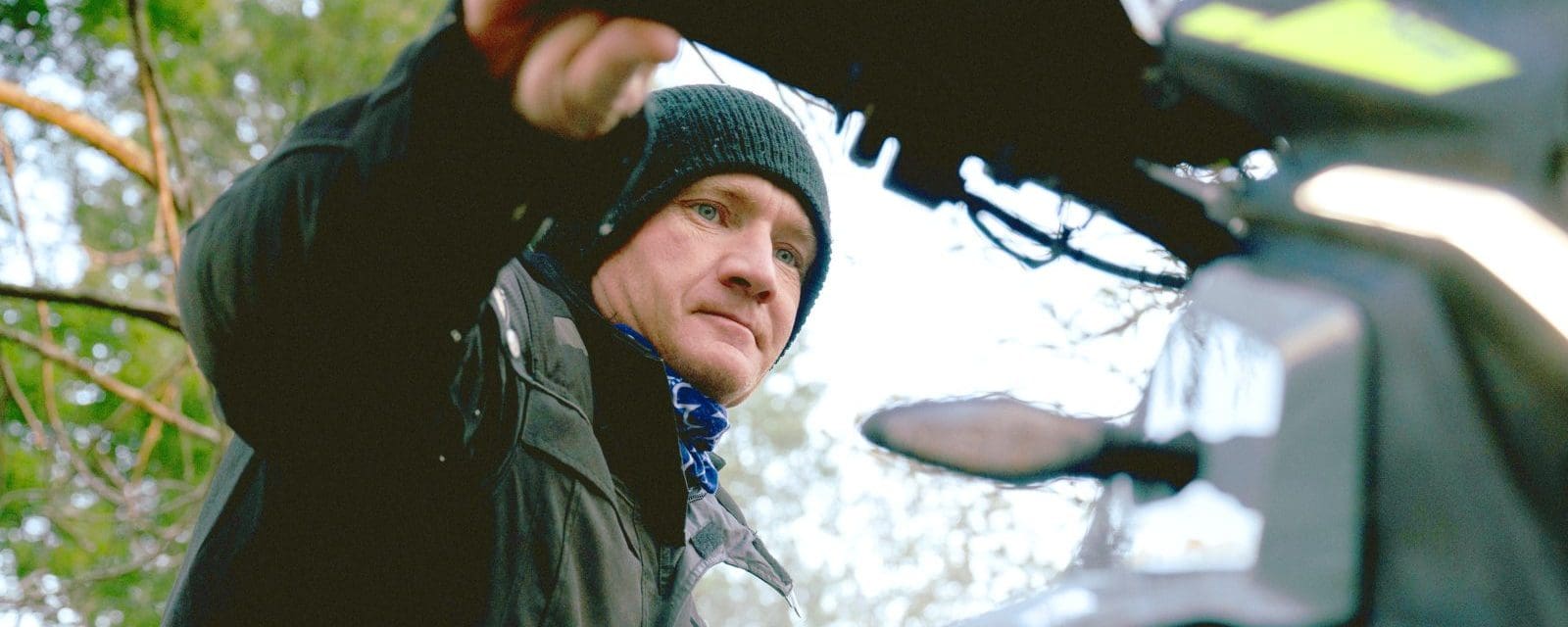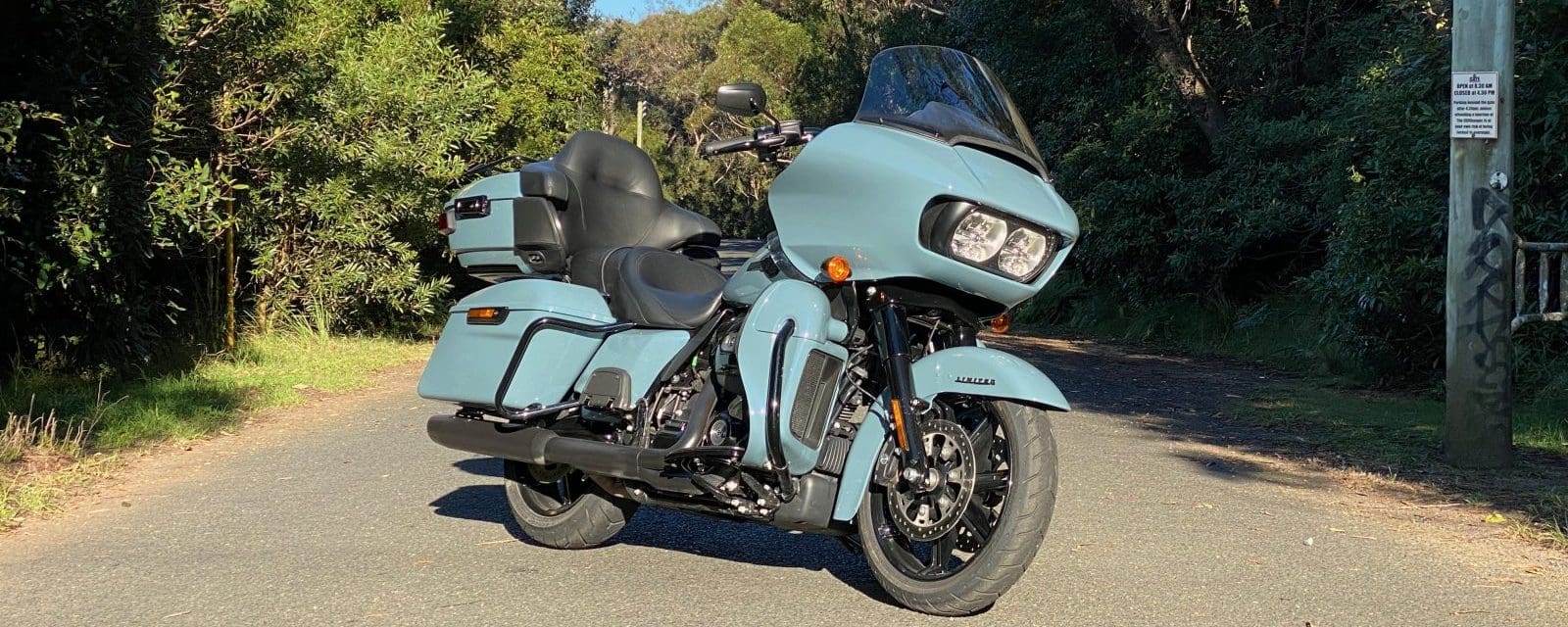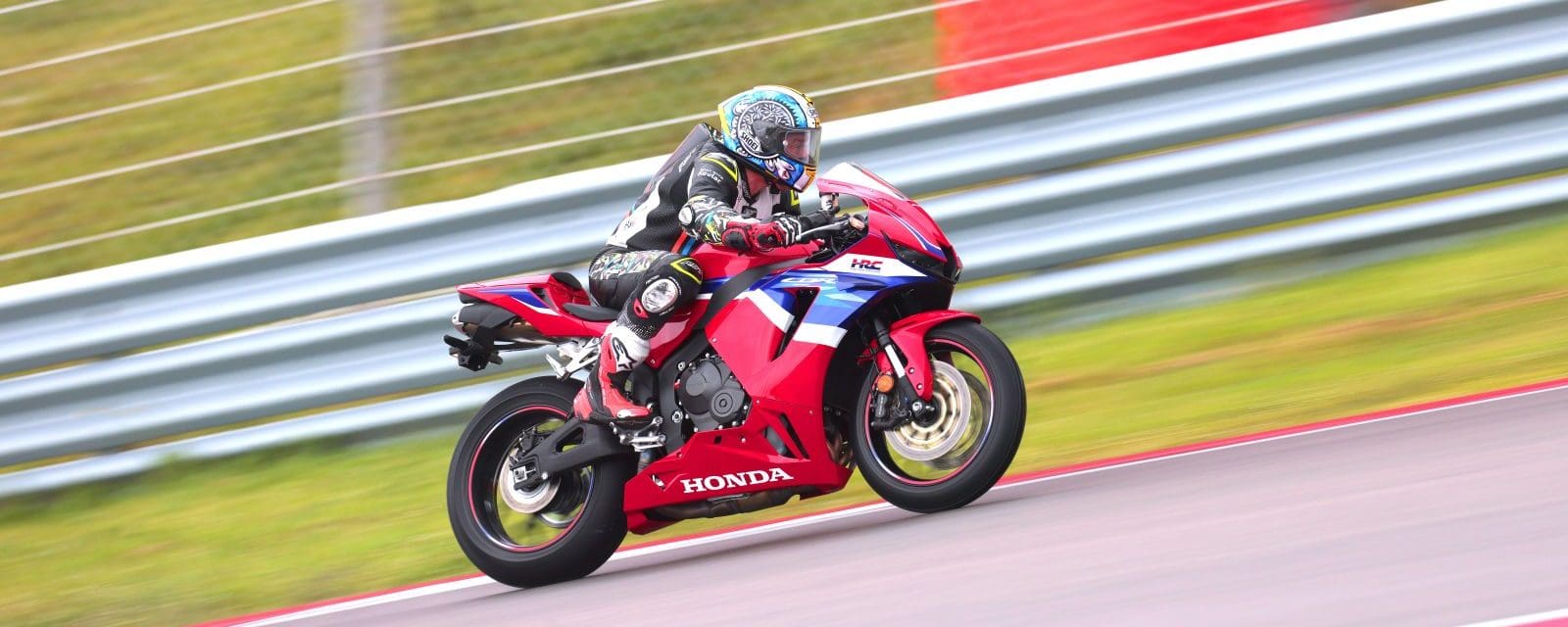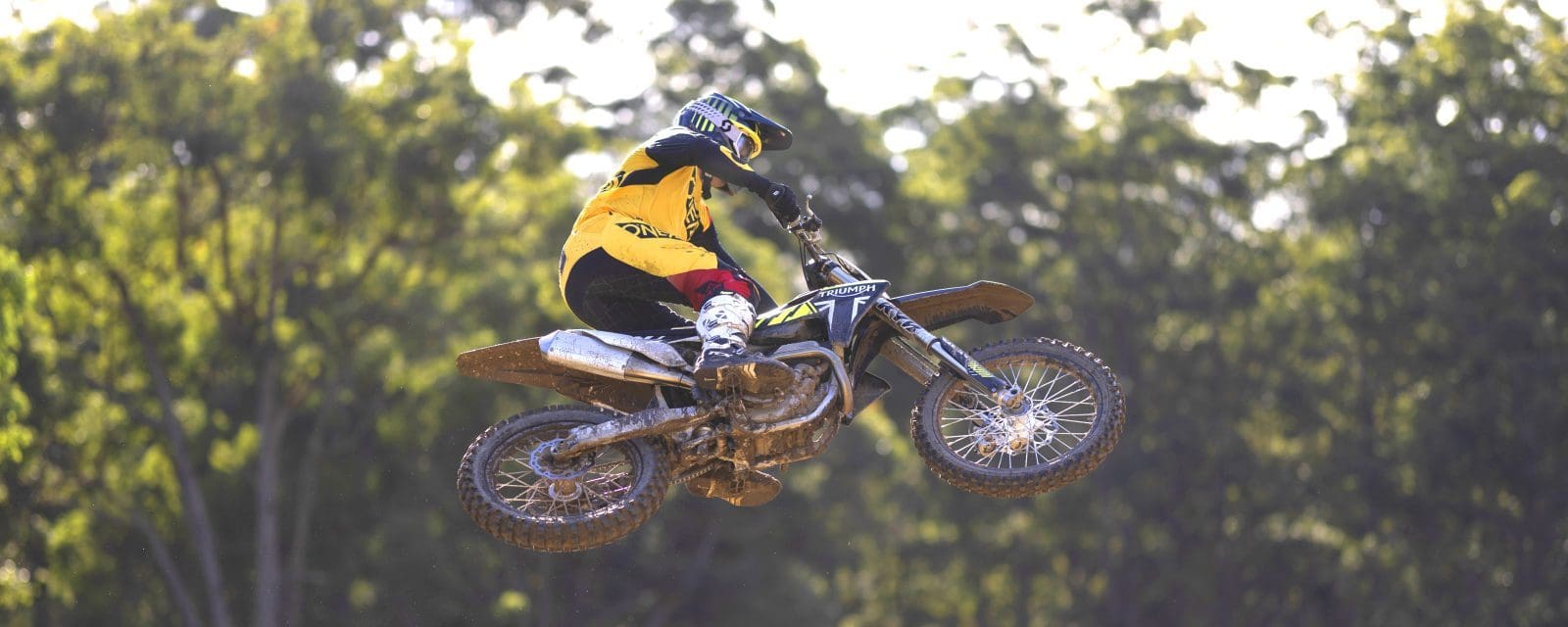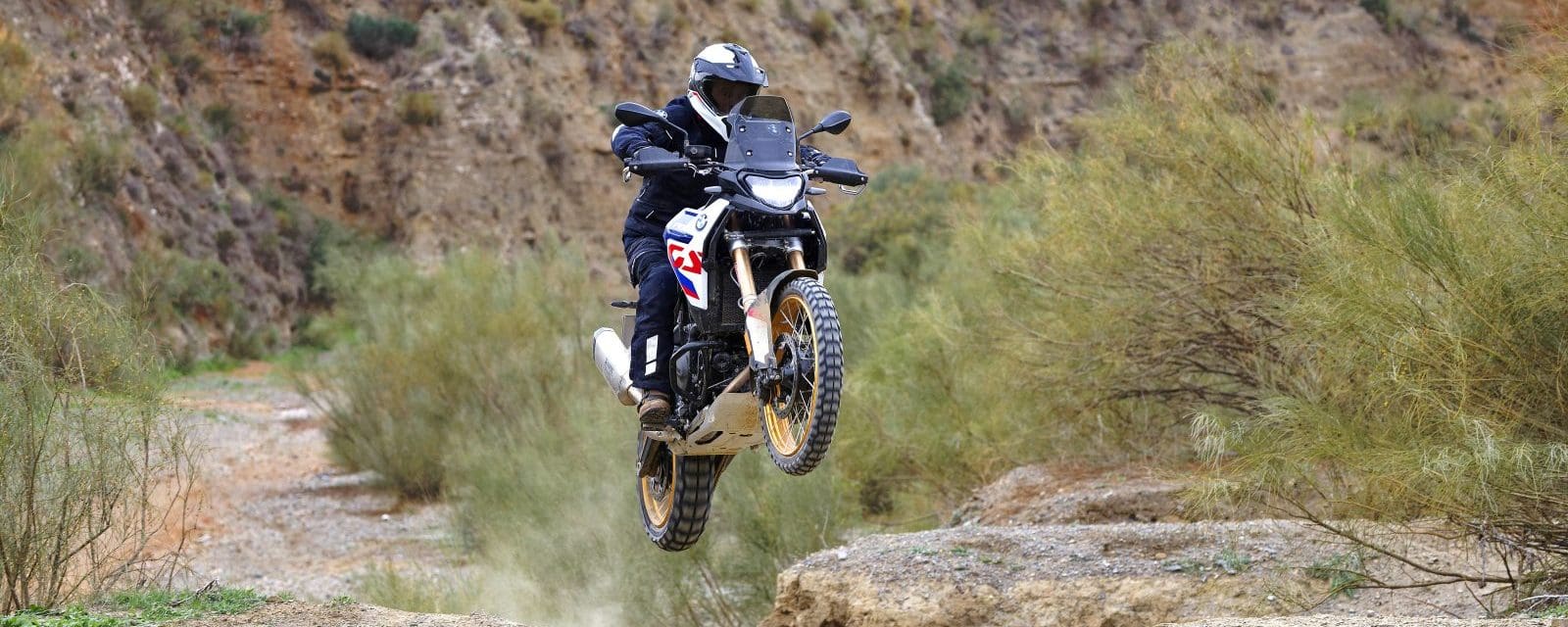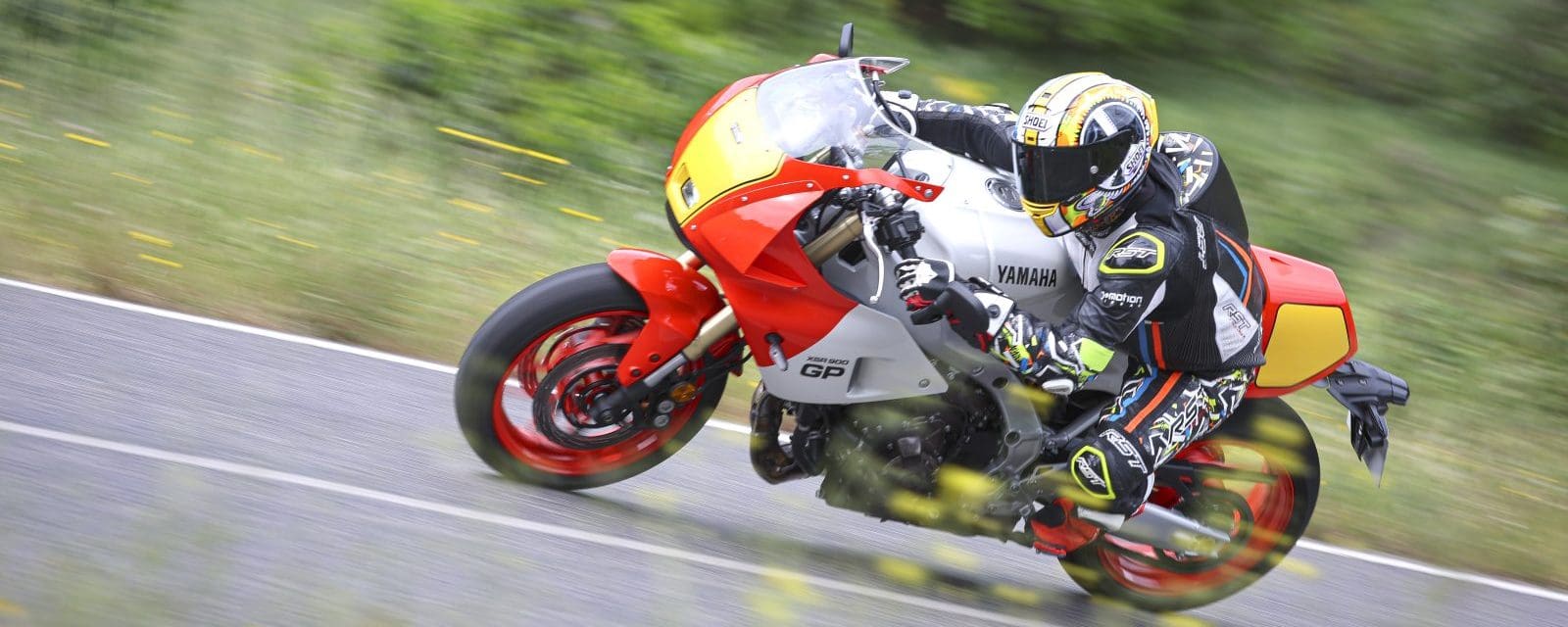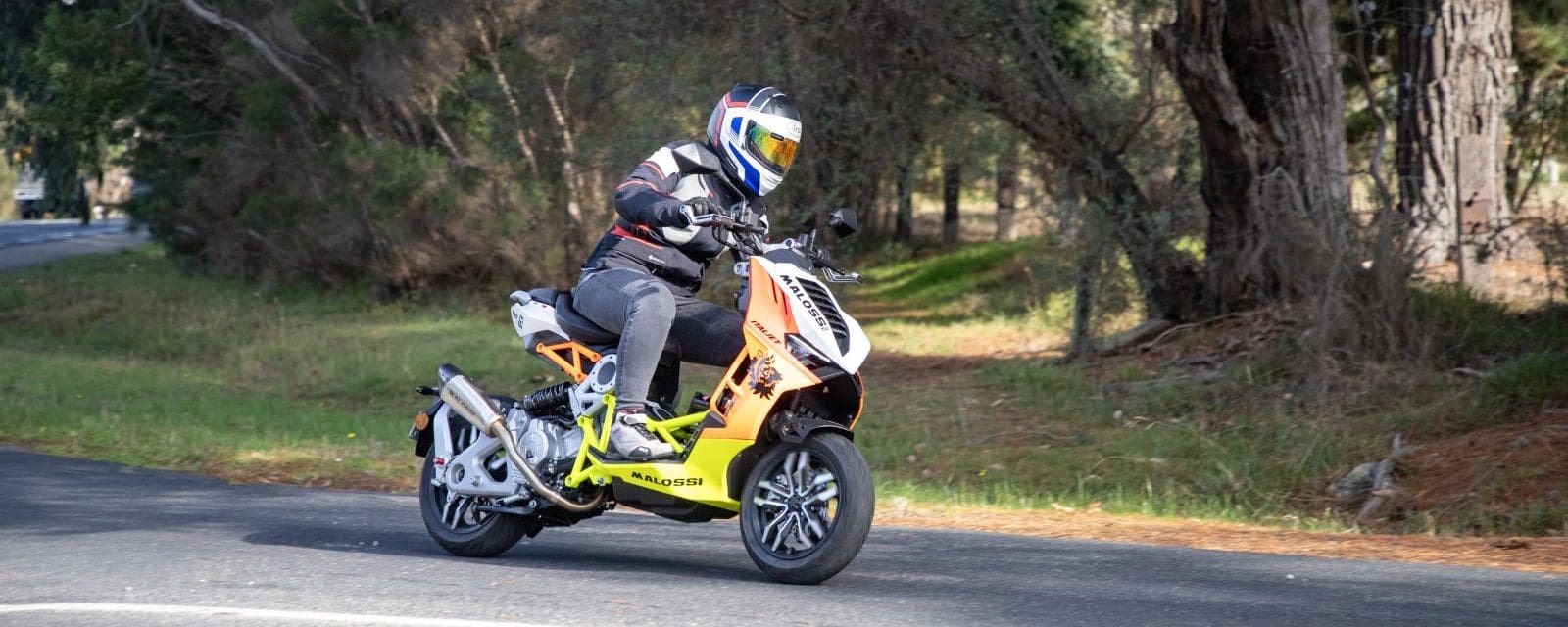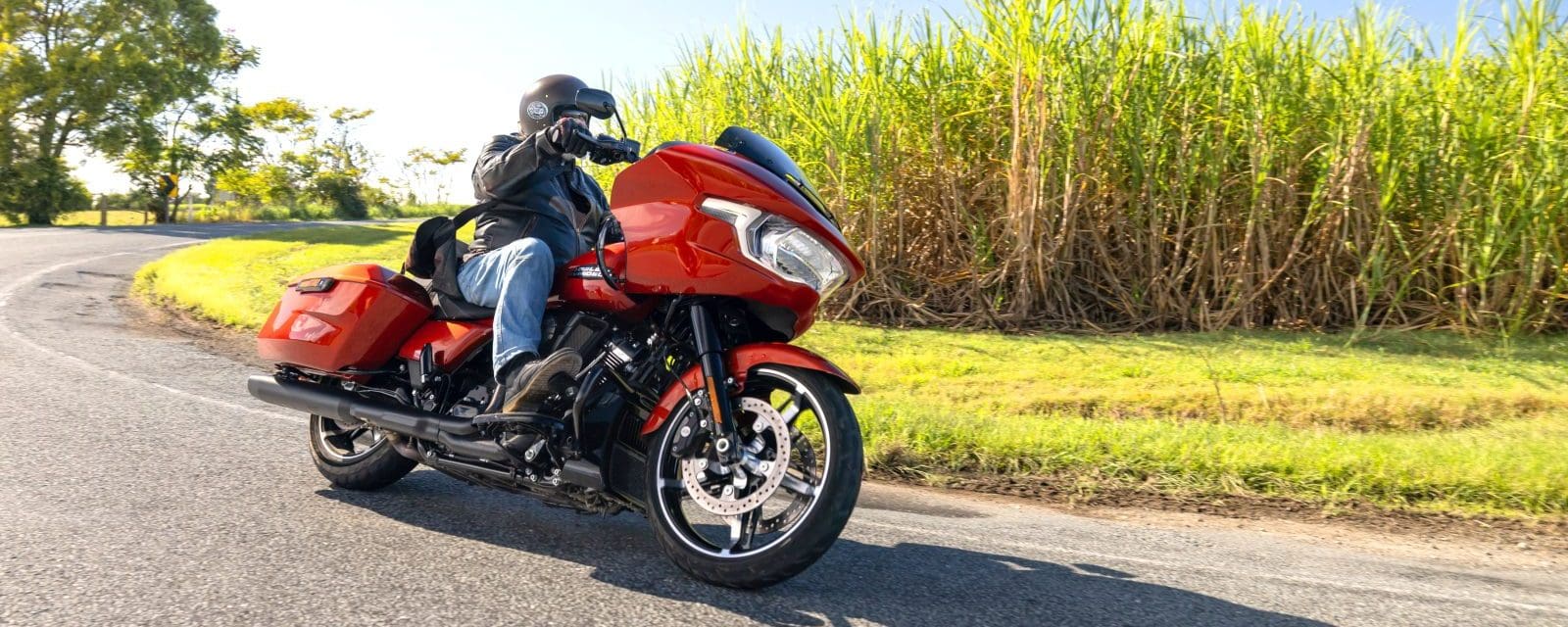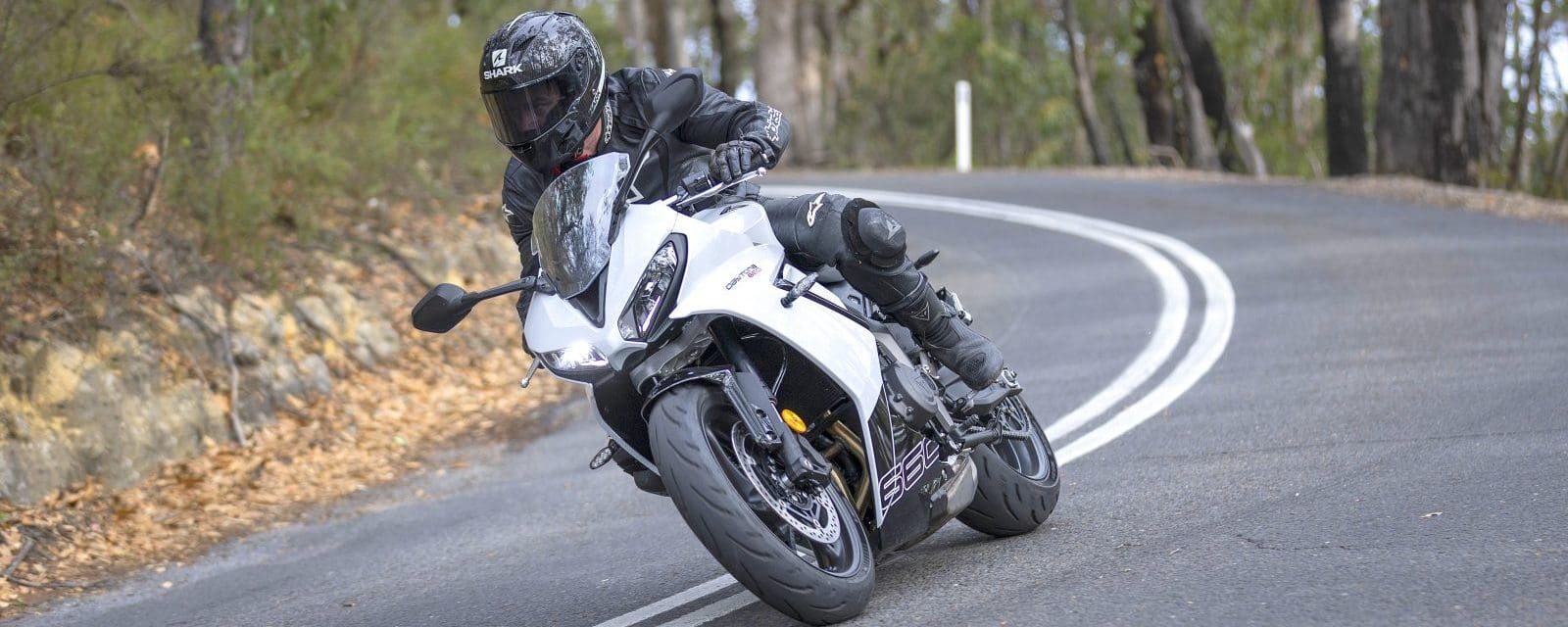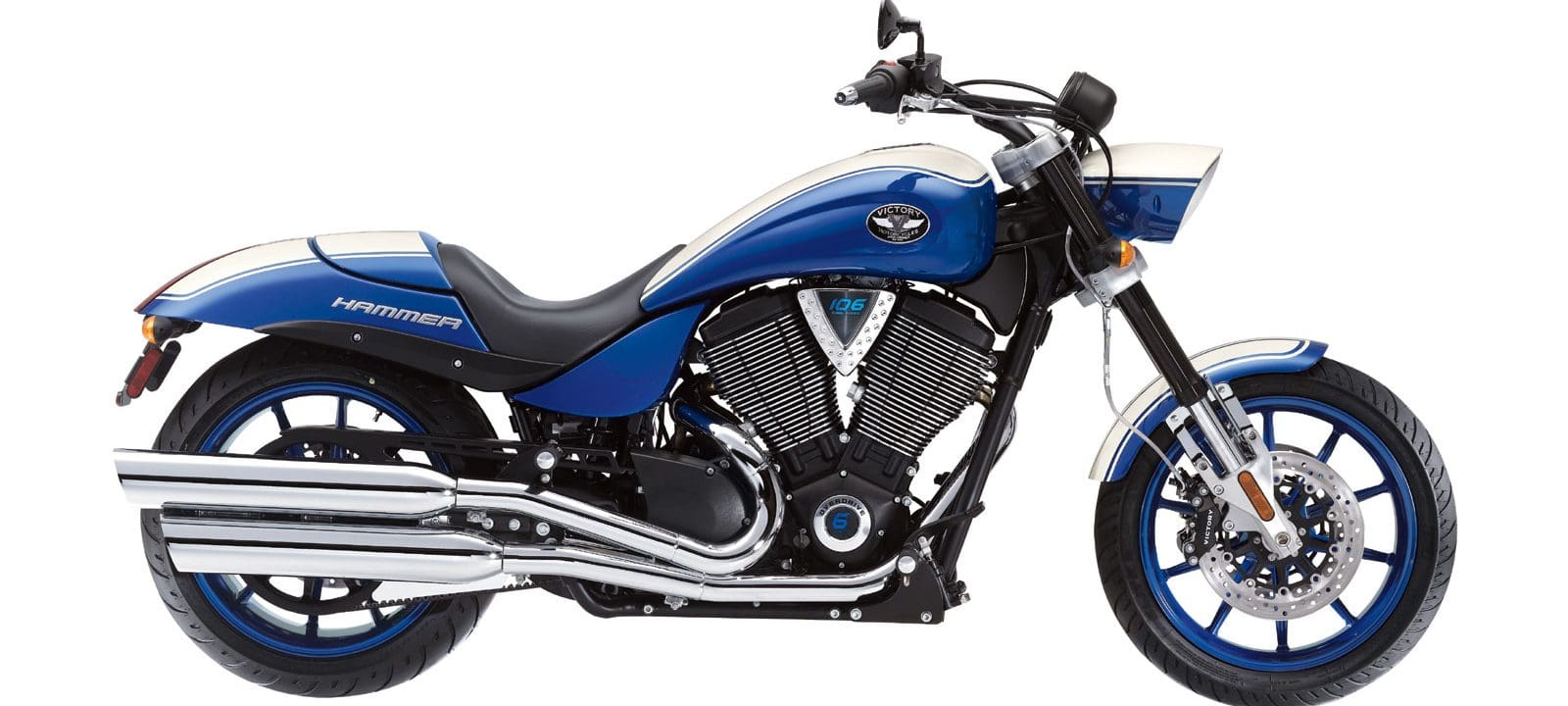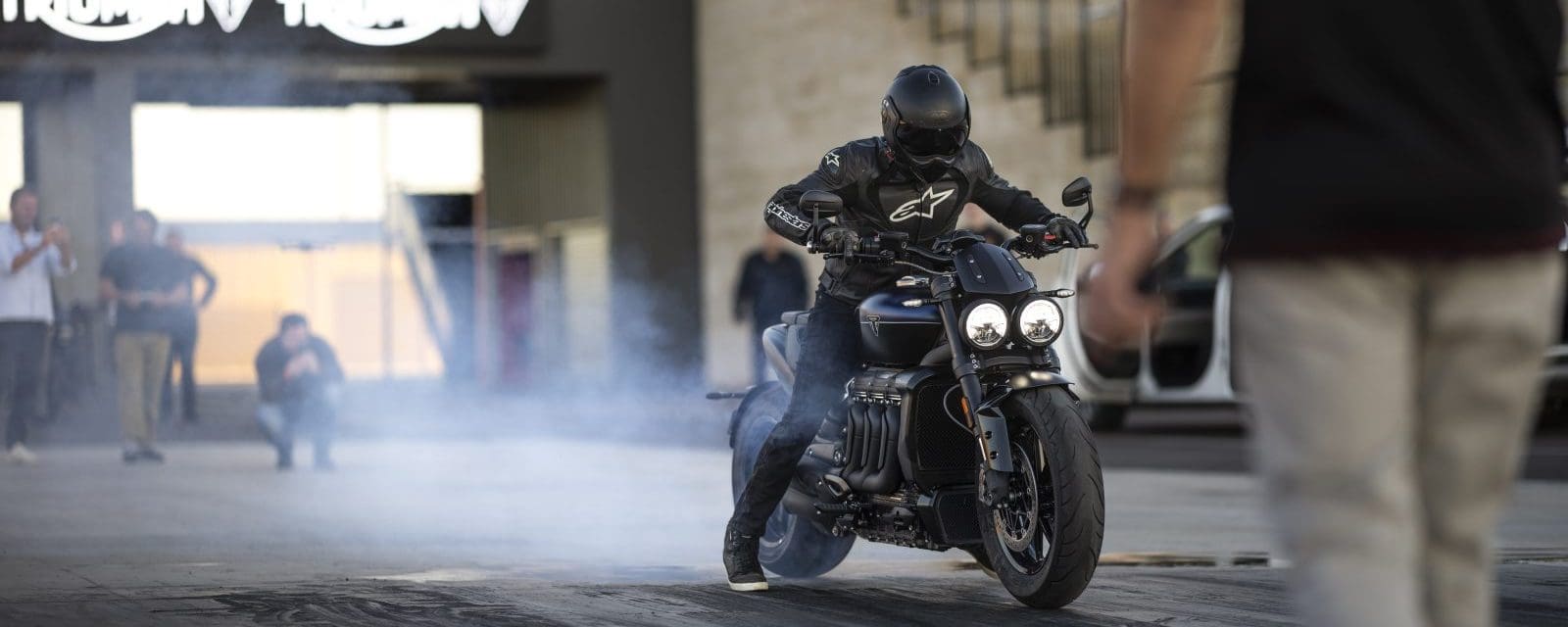By its own admission, MV Agusta has ridden a bumpy road in recent times. The past few years have seen its fair share of struggles. But rather than looking at cost-cutting, off-shore manufacturing opportunities and safe middle-of-the-road designs, MV Agusta’s suave president, Giovanni Castiglioni, and new business partner Timur Sardarov have decided the company must first and foremost remain Italian, in both location and in spirit.
For the past two years, the MV Agusta development team has been working tirelessly on a host of new designs and systems, including a new clutch it believes will revolutionise the way we ride motorcycles. The first model to be fitted with the new Smart Clutch System (SCS) is its top-of-the-range touring bike, the Turismo Veloce Lusso 800. Combining the SCS clutch system with a new electronics package and a raft of updates which also appeared on the 2018 Brutale 800, MV has produced a bike that is sexy and exciting, while providing a glimpse of the future direction of the marque.
From the moment R&D technical director Brian Gillen introduced the new bike at the MV factory, the main talking point became the new Rekluse-based Smart Clutch System that, when combined with bi-directional quickshifter, makes the bike a truly semi-automatic performance machine. But it still has a clutch lever for those times when you feel like riding in a conventional manner (or when you want to pull an awesome wheelie).
In simple terms, the SCS automatically engages and disengages when the engine revs fall below or rise above certain points. But unlike an aftermarket Rekluse clutch, popular with off-road riders, the MV Agusta system uses a tricky combination of mechanicals and electronics to weave its magic (see breakout).
The launch kicked off with a lesson on clutchless riding in the factory car park. Putting the bike into gear for the first time without reaching for the clutch lever is a weird experience. After 40 years of start, clutch in, select gear and go, the process used to get a motorcycle underway has become almost innate behaviour, so to suddenly change this method means another part of my brain needed to go into battle against the part that has been looking after bike-starting duties for decades.
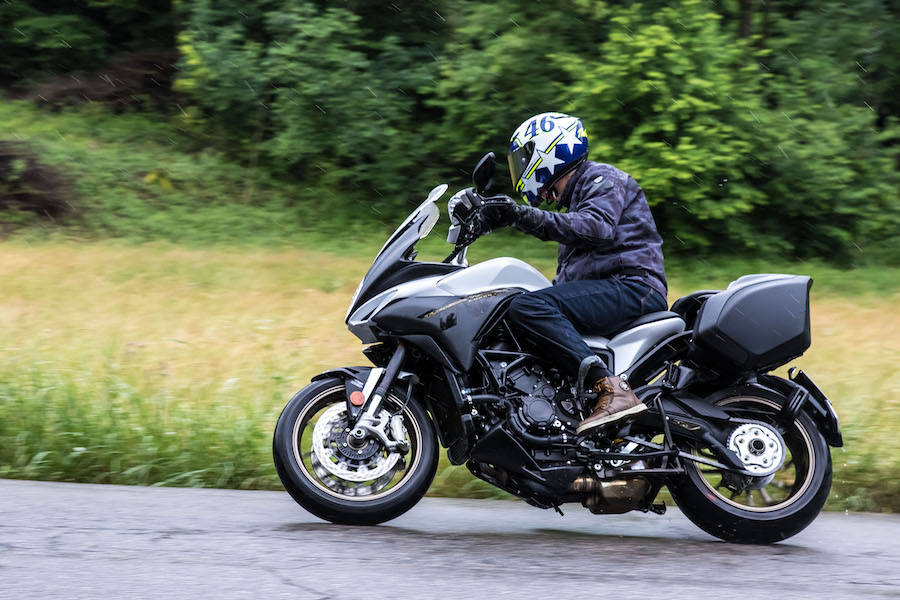
Using the SCS is as simple as starting the bike and selecting first gear, the bike will just sit there idling as though it’s in neutral, there’s no slight jump when first gear is engaged. A slight twist of the throttle is all it takes for the bike to start creeping forward. Give it a little more gas and it will pull away smoothly. If you twist the throttle to the stoppers from a standing start, the MV’s electronics step in and simply ensure an extremely fast and efficient getaway.
MV Agusta claims the system, combined with its 81kW (108hp) of power and dry weight of 192kg, will consistently deliver a 0-100km/h acceleration time of around three seconds – that’s comparable to a good WSBK launch. No matter how quickly I snapped open the throttle, the bike launched away quickly and smoothly. Once the heavens opened, I was able to really put the system to the sword.
On a wet and slick road surface, and with the bike in Sport mode, I took a deep breath, readied myself for the expected wheelspin and twisted the throttle to the stopper. Incredibly, the bike launched away just as it had done in the dry. The electronics made their thousands of calculations in the millisecond it took me to twist the throttle, working out the available traction to deliver a measured amount of torque to the SCS clutch for a perfect wet-weather launch.
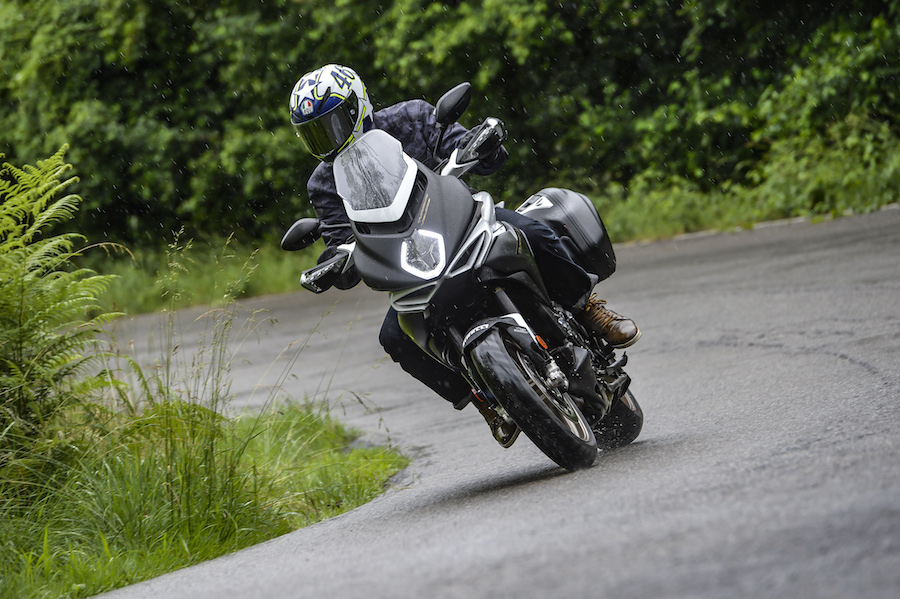
A good indication of how well new technology will be accepted by the buying public can be gauged by how quickly it becomes second nature to use. The first time I rolled to a stop, my fingers instinctively reached for the clutch lever. I managed to refrain from doing so, and that was the only time it happened. From that point on, I didn’t give the clutch lever a second thought. Even when riding in traffic and performing low-speed U-turns the clutch performed faultlessly.
Being Italian, looks are just as important as technology, so MV has put its new SCS system on show. The clutch cover is transparent, showing off the crimson-red clutch plates inside. It’s a gorgeous styling touch for a beautiful machine with the added bonus of making the SCS-equipped bike instantly distinguishable from the non-SCS bike.
The weight penalty for the new clutch is just a few grams, which was one of the deciding factors for the firm not going with a heavier dual-clutch system.
With a history steeped in racing, it’s no surprise just about everything MV Agusta produces has a sporty look, and the Tourismo Veloce is no different. Its primary role may be as a touring bike, but there’s a sporty element to the design that hints at the type of ride it will deliver. The lines and colours amplify the compact chassis, while the tank and seat very much have a look of speed.
At the rear, two 30-litre hard-case panniers have been integrated into the subframe and are no wider than the handlebars, allowing for lane filtering with ease.
Head of design Adrian Morton told AMCN: “For a lot of manufacturers, luggage is sourced from an external supplier and just added to the side of the bike. But we needed to retain the look of compactness, so we tried hard to integrate the luggage as part of the bike’s design. What we have ended up with is visually seamless.”
The design of the cases provides support for the pillion’s legs, and while the exhaust system appears to have been taken directly from the F3, its unique design points hot exhaust gasses away from the pillion. The lass I enjoyed the company of during our ride gave these ideas, and the comfort level of the seat, top marks. Given we stayed with the lead pack in the wet conditions, it’s a reflection of how well the bike handled two-up duties.
The only complaint I have about the panniers is that they hide an aluminium subframe that provides an illusion of the seat floating above the rear wheel, courtesy of a void between the subframe and the seat. With the pannier mounting points integrated into the fairing, the design looks good with or without the bags fitted.
The rear wheel has also been designed specifically for the Tourismo Veloce. Inspired by the company’s much-loved F4 sportsbike, it features square sections splitting up the spherical shape.
Up front, the LED headlight’s rhomboid design makes the bike instantly recognisable as an MV. The heated hand grips are protected by handguards that contain the indicators and LED daytime running lights.
The slim screen is manually adjustable, which is easy to do while riding, and it did a pretty good job of protecting me when the heavens opened.
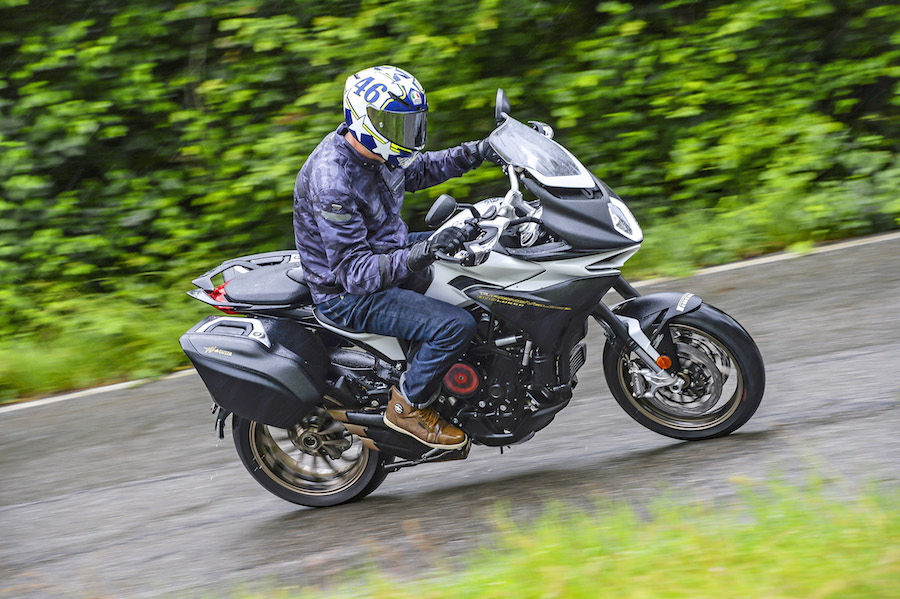
Styling cues from MV’s past include the 21.5-litre tank, which was inspired by the legendary 1950s Disco Volante model. As well as looking stylish, it’s practical. My lanky legs slipped comfortably underneath the lobes of the tank, providing an excellent anchor point when riding two up at speed. When riding solo, the tank shape provided an excellent knee-lock point, amplifying the feel from the quick-steering chassis.
While the new clutch is the star of the mechanical show, the Turismo Veloce Lusso 800 is no one-trick pony. The electronics are the same suite fitted to the latest Brutale 800, as is the triple-cylinder 798cc engine, though slightly detuned for touring duties. The engine produces 81kW (108hp) at 10,150rpm and 80Nm at 7100rpm. That power runs through an updated six-speed gearbox, and the quickshifter has a secure mechanical feel about it, leaving you in no doubt the next gear has been correctly selected.
The engine has a MotoGP-inspired counter-rotating crankshaft. The rotational inertia of the counter-rotating crank apparently creates a vector that offsets the rotational inertia of the wheels. This inertia offset allows the rider to enter a corner later, and downshift faster. With the engine spinning higher, it helps to pull the bike into the corner with additional load on the front tyre. For me, it just felt like a sweet-handling little bike, thanks mainly to its compact dimensions and short 1445mm wheelbase.
Braking is via Brembo four-piston radial calipers up front, biting twin 320mm floating discs. The system is controlled by the Bosch ABS 9 Plus, which includes rear-wheel lift mitigation. A necessary addition is the parking brake. Having a semi-automatic clutch means that when the engine is not running, or at low revs, the bike will freewheel even when in gear. The parking brake is foot-activated and located above the rear brake; it doesn’t impede access while riding.
On the road, the raspy 798cc triple is a real Dr Jekyll and Mr Hyde, delivering a claimed 90 per cent of peak torque low in the rev range. This produces a purposeful surge with every sweet, clutchless gear change when riding around the 4000-5000rpm range. Hyde will arrive if the revs are allowed to climb to 10,000rpm, where the bike’s F3 DNA lurks.
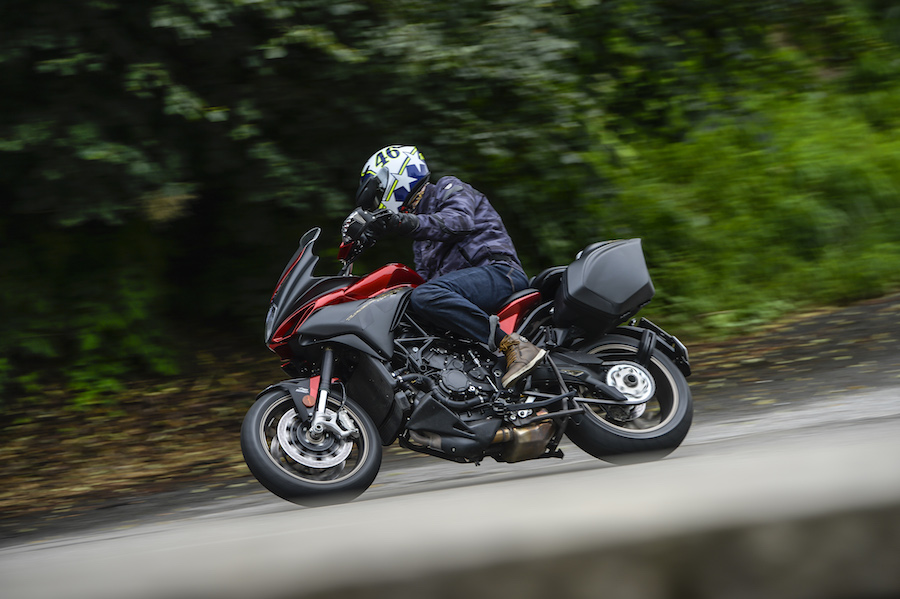
In addition to the updated gearbox and engine internals delivering a smoother and quieter ride, a big improvement in the bike’s handling has been made by swapping the single, long bolt previously used to anchor the left and right sides of the trellis frame to the engine, for two shorter, more rigid bolts – one on each side. The improvement in handling was noticeable on quick direction changes. In the past, the compact dimensions of the chassis highlighted its twitchiness, and flicking from side to side sometimes generated head shake, but this problem appears to have been rectified by the new two-bolt system, making the chassis more rigid.
There was no shortage of feel from the semi-active suspension in the wet or dry. With a pillion on the back, I cranked up the preload a couple of turns, set the electronic suspension damping to ‘two riders and bags’, then rode it like a sportsbike through the hills in the pouring rain.
Understanding and manipulating the electronics is child’s play. Everything is displayed in an easy-to-read TFT dash. The starter button doubles as the selection button for the four ride-by-wire maps, which can be customised and saved via a single button on the left-hand switchblock – even on the fly. Delve into the Custom map to play with numerous parameters including throttle sensitivity and torque, which can be limited to 70 per cent. The engine braking can be set to either Sport or Normal and is one of a number of electronic settings that gathers information from the Inertial Measurement Unit (IMU) to determine the bike’s lean angle and rate of deceleration before calculating the level of grip available at the back wheel and modulating engine braking to suit.
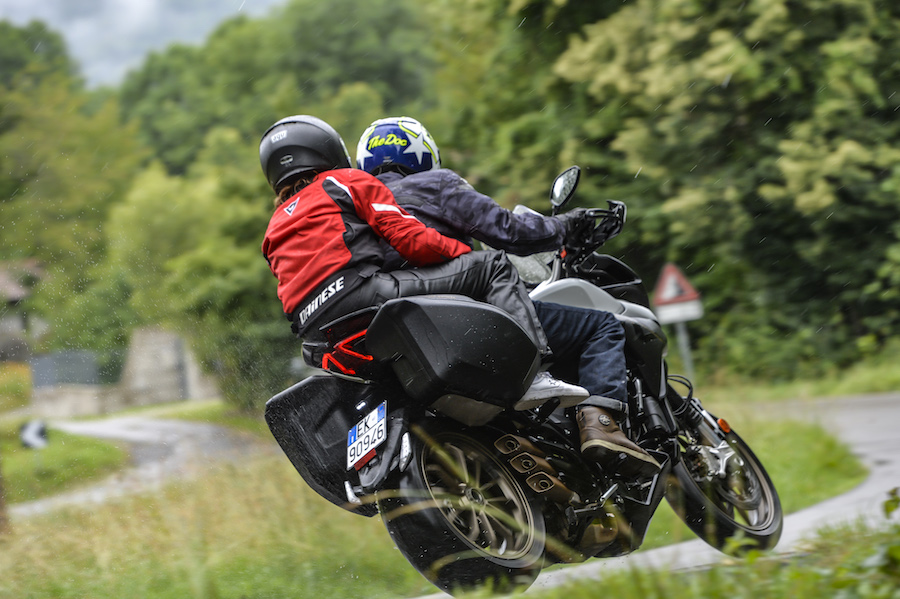
The new model has also seen an update of the algorithms used by the ride-by-wire and traction control systems. The way the traction control intervenes and feeds the power back on once full grip levels are reinstated has been improved, eliminating the sometimes unpredictable power surging of older systems, and the rev limiter has different mappings for Touring and Sport modes. Both modes have the same rev limit, but the way it reacts when the rider reaches the limiter differs. In Sport mode the electronics let you squeeze every last bit of power out of the engine before you get to the soft-cut limiter, whereas in Touring mode the power gently falls away during the last 500rpm before the limiter cuts in.
Australian pricing has just been announced for the new SCS-equipped Turismo Veloce Lusso 800 at $27,990 (+ORC) which includes a three-year warranty and roadside assist. A less expensive non-SCS variant is also available for $25,990 (+ORC), but you’ll need to use the clutch lever.
The Turismo Veloce is at the top end of the sports-touring price range, and one comparable rival is Ducati’s Multistrada S at $28,490 (plus on-road costs). But frankly, the decision to purchase an MV Agusta is driven by emotion, so for a lot of buyers the price tag will be irrelevant.
If that’s the case for you, then all you need to know is that the new Turismo Veloce Lusso 800 SCS is as gorgeous as the MVs before it. The updated engine sounds just as glorious and the handling has gone up a notch. And with its new SCS clutch, the MV Agusta you have lusted after because it’s different just got a little more unique.
At a glance
- The Smart Clutch System offers the rider two choices; to use the clutch in the traditional way by operating the lever on the handlebar, or to allow the SCS to handle clutch duties. The two systems operate in parallel; there is no need to switch from one to the other. And yes, the SCS-equipped bike can still do awesome clutch-up wheelies.
- Because the SCS does not allow the transmission to remain engaged when the bike is parked, the system required the addition of a parking brake to prevent the bike from rolling away when left unattended. The parking brake is engaged/disengaged via a lever positioned above the rear brake lever.
- Mechanical noise has been reduced with new acoustic swingarm covers. A harmonic damper, located on the side of the cylinder head, also reduces vibration. The transmission primary gears have been updated to reduce friction and mechanical noise, along with a new balance shaft and mechanical cam-chain tensioner to replace the old hydraulic tensioner.
- A Bluetooth router works with a GPS module providing smartphone connection via an MV Agusta App. The data, which can be downloaded and stored on a phone, includes location on a virtual map as well as throttle position, RPM, gear selected, lean angle, speed, and both acceleration and deceleration at any given point during the ride.
- The electronic semi-automatic suspension works in conjunction with the electronic Chassis Stability Control system (CSC). An IMU monitors the bike’s pitch, acceleration and lean angle hundreds of times per second and adjusts the damping to suit. The performance of the damping also changes between the riding modes and four levels of damping can be set: single rider; single rider with luggage; rider and pillion; and rider and pillion with luggage.
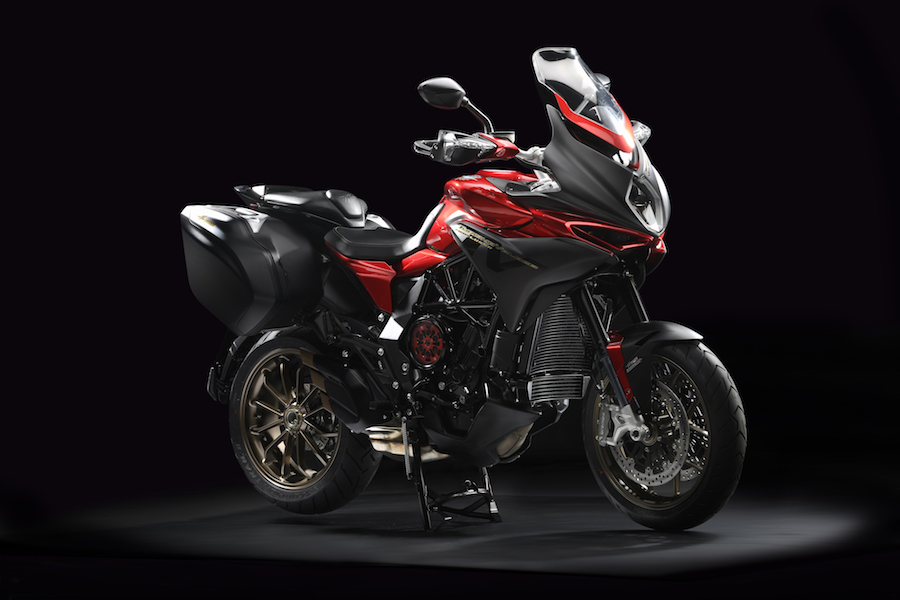
Tech: Smart Clutch System
The ins and outs of the swanky new clutch
Developed over a two-year period, the Radius CX Automatic Clutch is a major part of the future vision for MV Augusta.
“We evaluated a lot of clutch systems during the development stage,” MV Agusta technical director Brian Gillen said. “We looked at dual-clutch systems, and we looked at CVT systems that are used on some high-performance scooters. But neither of these delivered the performance we wanted with this new motorcycle because they increased both mass and inertia.”
The new clutch was developed in conjunction with American clutch specialists Rekluse, but it differs greatly to the Rekluse aftermarket product. SCS has been designed specifically for the Tourismo Veloce and is fitted at the point of production, so it is integrated into the bike’s systems. It’s also light, weighing in just 36 grams heavier than the standard clutch.
Software algorithms within the engine management system allow mathematical modelling to control torque delivery to the clutch based on speed, grip level, and which of the engine maps has been selected. It can also control at what point the clutch begins to engage, the slip period and at what point it goes into a lockout when full power is being transferred from the engine to the rear wheel. The electronics controlling how much torque is being fed to the clutch are constantly monitoring the bike’s speed, gear, throttle position and the requests being made by the rider.
“With an electronic ride-by-wire system, opening the throttle is no longer a command, it’s a request,” Gillen explained. “There is no direct link between your right hand and the butterflies. The rider now sends a request for a certain amount of torque to the engine management system, and the electronic brain makes the decision on what will be delivered based on velocity, gear position, available grip and a number of other parameters being monitored by the bike’s electronic brain.”
Mechanically, the SCS uses the same type of clutch basket as a manual clutch. Stainless-steel basket sleeves are used and the clutch pack has 12 steel discs and 10 fibre friction discs. The discs are thinner and lighter than a standard clutch, allowing greater control over friction, temperature and swell. The steel pins have a diamond-like carbon (DLC) coating providing a reduction in friction between the plates and the clutch hub for a smooth movement of the plates inside the clutch system.
The core of the system is an EXP expander disc, and the centre components are centrifugal counterweights. As the electronics control how much acceleration is being fed to the clutch hub, the mechanical counterweights expand, providing bite between the friction and steel discs, creating drive.
The electronics modulate the torque delivery to ensure a smooth and fast take off, not a jerky jump forward like dumping the clutch. The result is an linear rate of acceleration, and it will be the same every time because the human element has been removed. The only thing the rider needs to do is twist the throttle to the stopper.
Words Chris Dobie
PHOTOGRAPHY MV Agusta

